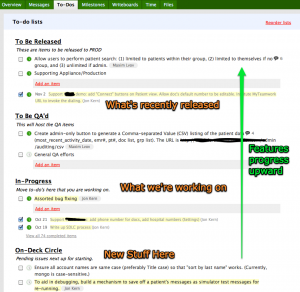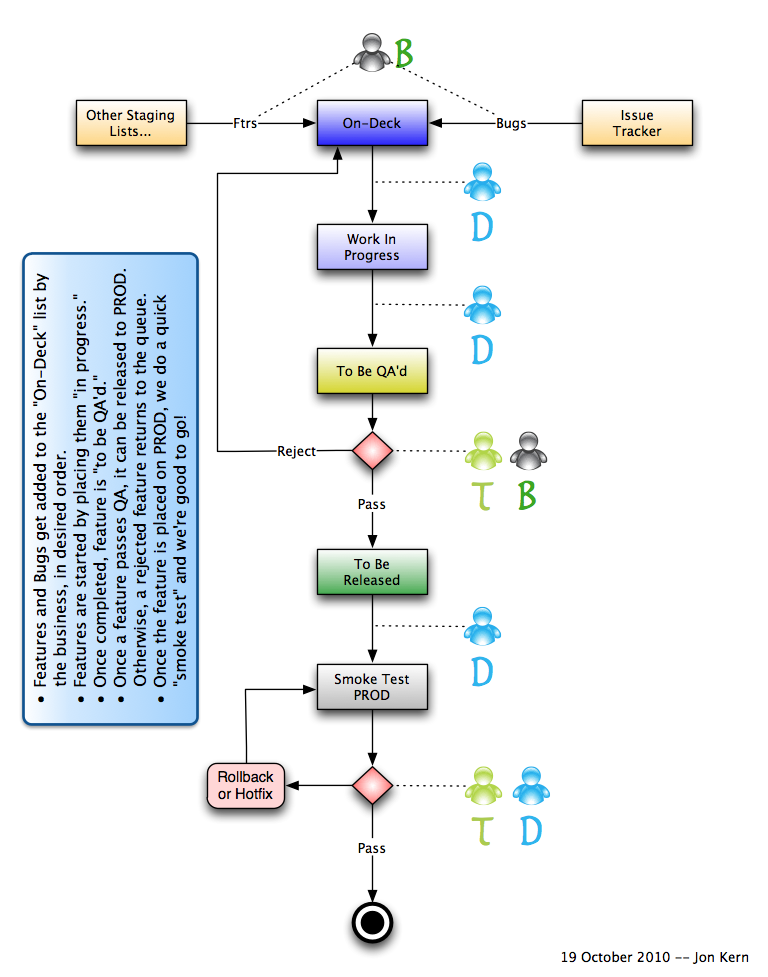In response to a posting on Agile Project Management…
I am starting up a ‘Distributed’ Agile Project and looking at tools to assist the distributed team communicate the status of work undertaken, stories, estimates and burn down/up charts as well as general collaboration (forums, document sharing etc).
There are tools such as Agile Wall, Mingle, Trac (with plugins etc).
I am ideally looking for an externally hosted solution (something that we will not be setting up in-house).
I have a core team of 15 people and with an additional 10 people that would want access. I am looking for any ideas or suggestions on online tools that you may have.
Thanks in Advance.
Regards
Neal
I’ve been doing this sort of thing since 2000, so it is very easy and very possible to be extremely effective as a distributed team.
Here is a very simple approach using Basecamp (and you can get an add-on for burndowns if you like that sort of thing). I’ve been doing this on a small project since March or so.
Then I set up other simple collaboration tools (looked like this on many projects, though you might have to march around that hodgepodge of a site to find more tool ideas):
- Wiki: Project stuff that is not issues or code needs a home; a.k.a.,
(you can use basecamp, though not as extensive as something like confluence) - Chat Room for being the virtual cubicle farm and water cooler. Skype or IRC works great. You can establish key words that call out for attention, like “@ALL I’m going to kick the TEST server.” You can even have textual scrums if voice is not always possible. For a while, we had a bot that recorded the chats and logged them to the wiki 🙂
- Issues/Bugs: You need a place to store your lists of things to get done. Some call that an issue tracker; others, simply a To-Do list. I have used Jira for a l-o-n-g time for both features and bugs. I have also used Lighthouse — which is just fine too.
Atlassian Studio is worth a look. You can add in continuous integration and code reviews and what not.
My suggestion: start really small and humble with the tiniest process.
That really simple Basecamp process I blogged about? We actually got to PRODUCTION with much less ceremony. There were none of the “To be QAd” or “To Be Released” because we did it more in iteration chunks, so we knew the overall state of a given iteration (in dev, qa, or released).
The slightly greater ceremony of QA and Release buckets allowed me to answer the need from the stakeholders and other non-developers to know the state of the project at a glance. It’s easy to see what is in the backlog, or what is in progress, or waiting QA, etc. Now we’re doing Kanban. I crank issues and (rare 🙂 bugs through one at a time usually.
Anyway, have fun!


